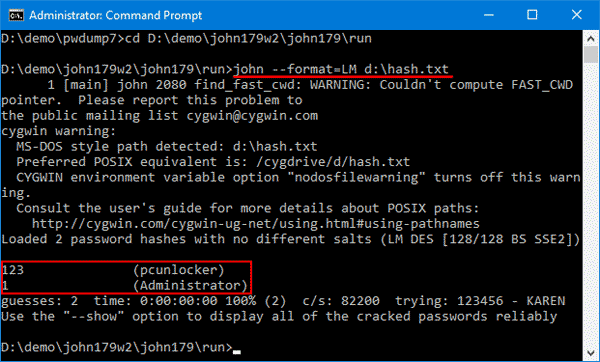

Running john with a password list on a shadow file | |
| Developer(s) | OpenWall |
|---|---|
| Initial release | October 3, 2002 |
| Stable release | |
| Repository | |
| Operating system | Cross-platform |
| Type | Password cracking |
| License | GNU General Public License Proprietary (Pro version) |
| Website | www.openwall.com/john/ |
Results for 'john the ripper pro' Filter. Pro-Knot is the most trusted printed knot reference in the world. Pro-Knot Weather Pro+. John the Ripper Pro password cracker for Mac OS X. John the Ripper is a fast password cracker, available for many operating systems. Its primary purpose is to detect weak Unix passwords, although Windows LM hashes and a number of other password hash types are supported as well.
John The Ripper is an open source and very efficient password cracker by Open-Wall. It was originally built for Unix but is now available for fifteen different platforms including Windows, DOS, BeOS, OpenVMS and Unix like operating systems. John the Ripper is part of these download collections: Password Unlockers. John the Ripper was reviewed by Olivian Puha. New in John the Ripper 1.7.9. John the Ripper is a fast password cracker intended primarily for use by systems administrators to detect and eliminate weak user passwords of Unix-like and Windows systems. John the Ripper Pro for Mac OS X features a native package (dmg), universal binary, support for SSE2 and AltiVec acceleration (on Intel and PowerPC, respectively), a large.
John the Ripper is a freepassword cracking software tool.[2] Gta v license key.txt (19 kb). Originally developed for the Unix operating system, it can run on fifteen different platforms (eleven of which are architecture-specific versions of Unix, DOS, Win32, BeOS, and OpenVMS). It is among the most frequently used password testing and breaking programs[3] as it combines a number of password crackers into one package, autodetects password hash types, and includes a customizable cracker. It can be run against various encrypted password formats including several crypt password hash types most commonly found on various Unix versions (based on DES, MD5, or Blowfish), KerberosAFS, and Windows NT/2000/XP/2003 LM hash. Additional modules have extended its ability to include MD4-based password hashes and passwords stored in LDAP, MySQL, and others.[4]
Sample output[edit]
Here is a sample output in a Debian environment.
The first line is a command to expand the data stored in the file 'pass.txt'. The next line is the contents of the file, i.e. the user (AZl) and the hash associated with that user (zWwxIh15Q). The third line is the command for running John the Ripper utilizing the '-w' flag. 'password.lst' is the name of a text file full of words the program will use against the hash, pass.txt makes another appearance as the file we want John to work on.
John The Ripper Pro Mac Torrent
Then we see output from John working. Loaded 1 password hash — the one we saw with the 'cat' command — and the type of hash John thinks it is (Traditional DES). We also see that the attempt required one guess at a time of 0 with a 100% guess rate.
Attack types[edit]
John The Ripper Pro Download
One of the modes John can use is the dictionary attack. It takes text string samples (usually from a file, called a wordlist, containing words found in a dictionary or real passwords cracked before), encrypting it in the same format as the password being examined (including both the encryption algorithm and key), and comparing the output to the encrypted string. It can also perform a variety of alterations to the dictionary words and try these. Many of these alterations are also used in John's single attack mode, which modifies an associated plaintext (such as a username with an encrypted password) and checks the variations against the hashes.
John also offers a brute force mode. Hannstar j mv-4 94v-0 bios reset. In this type of attack, the program goes through all the possible plaintexts, hashing each one and then comparing it to the input hash. John uses character frequency tables to try plaintexts containing more frequently used characters first. This method is useful for cracking passwords that do not appear in dictionary wordlists, but it takes a long time to run.
See also[edit]
References[edit]
- ^https://www.openwall.com/lists/announce/2019/05/14/1
- ^Anonymous (2001). Maximum Linux Security (2 ed.). Sams Publishing. p. 154. ISBN0-672-32134-3.
- ^'Password Crackers'. Concise Cybersecurity. Archived from the original on 2017-04-04. Retrieved 2016-12-03.
- ^'John the Ripper'. sectools.org.
External links[edit]
